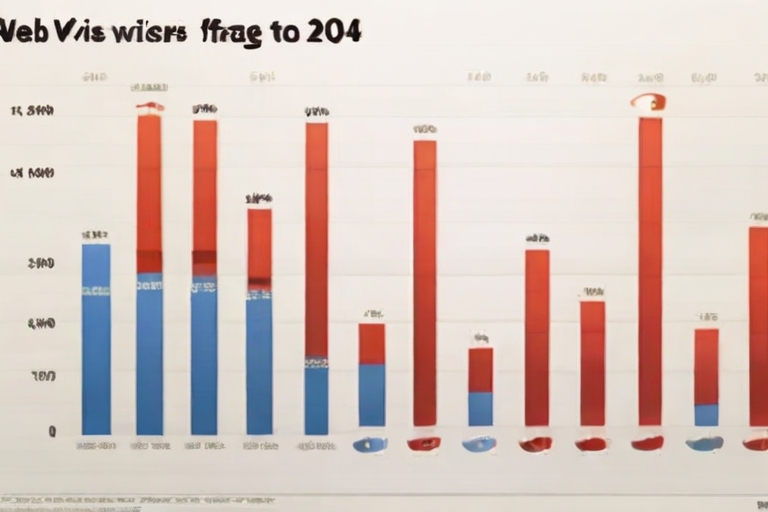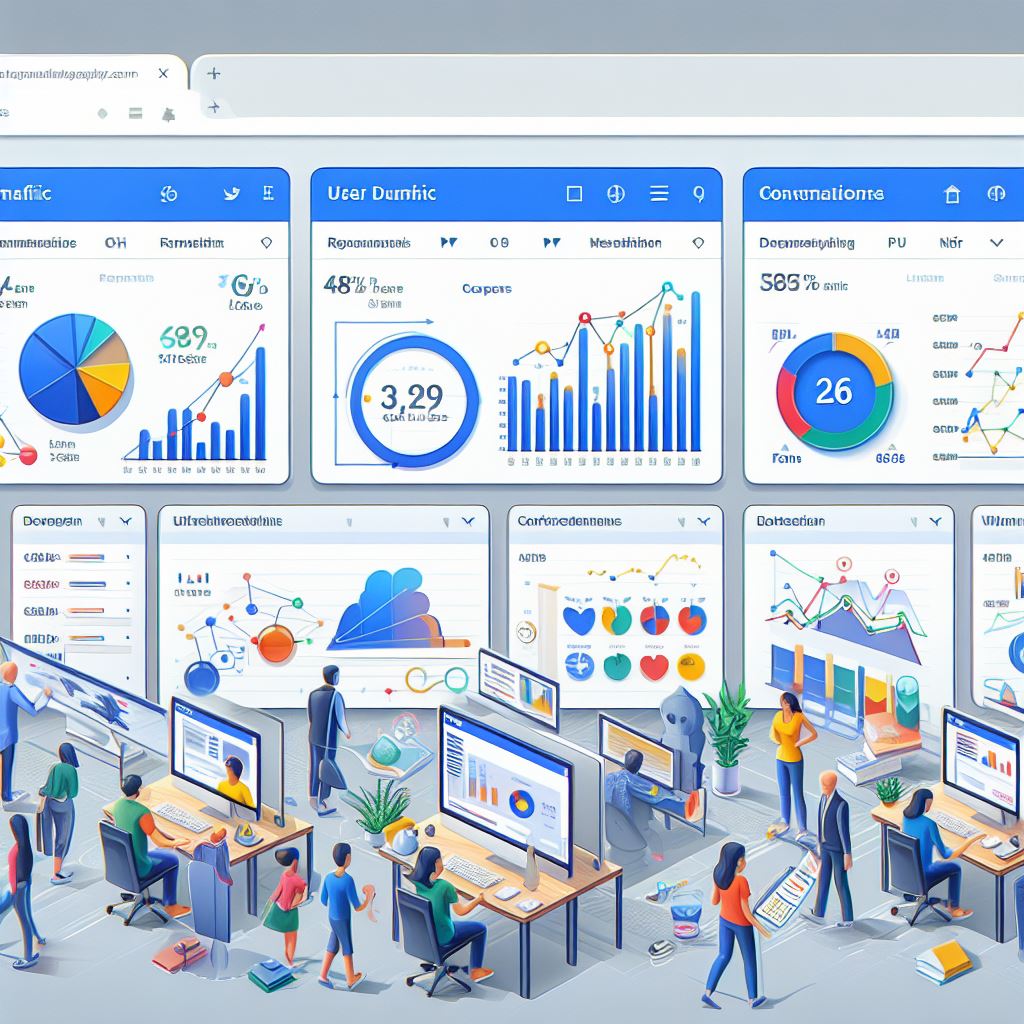Setting up a Google Analytics account is simple with this beginner’s guide tailored for people needing SEO services. Google Analytics helps track website performance and understand user engagement. This tool is critical for optimizing online visibility and improving digital marketing strategies.
Table of Contents
- Prepare Your Website for Google Analytics Integration
- Verify Website Compatibility with Third-Party Services
- Steps to Create a New Google Analytics Account
- How to Add Property in Google Analytics Account
- Implement Google Analytics Enhanced Ecommerce Tracking
- Will Enhanced Ecommerce Tracking Affect My SEO Rankings?
- What Are the Key Metrics to Monitor in Google Analytics Reports?
- How to Export Google Analytics Reports into PDF Format
- How to Ensure Comprehensive Data Collection in Analytics
- What Advanced Techniques Improve Data Collection Accuracy?
Key Takeaways for Beginner’s Guide to Setting Up Google Analytics Account
- Setting up a Google Analytics account provides crucial insights into website performance and user interactions.
- Verifying website compatibility with third-party services such as WordPress minimizes integration issues.
- Ensure website readiness by using best practices like verifying compatibility and backing up data before integration.
- Matrics Rule experts offer valuable advice on setting up and configuring Google Analytics effectively.
- Creating a new Google Analytics account requires accurate website and user data for proper configuration.
- Google Analytics supports a seamless integration, enabling multiple websites to link to one account.
- Adding properties involves specific steps and considerations, such as understanding limitations and troubleshooting.
Prepare Your Website for Google Analytics Integration
Ensuring a website is ready for Google Analytics integration involves specific website readiness steps. Websites should verify their compatibility with Google Analytics tools, as doing so prevents potential tracking issues. It is recommended to backup website data to protect against data loss during google analytics integration. Popular website platforms like WordPress and Shopify, which support Google Analytics integration, often facilitate a seamless website analytics preparation.
Verify Website Compatibility with Third-Party Services
A website compatibility check is essential for Google Analytics setup. Third-party services play a significant role in google analytics services by providing enhanced data tracking. Services like Tag Manager are widely recommended for smooth integration with analytics tools. A full compatibility verification duration typically spans a few hours, allowing website owners to perform detailed integration tools evaluation and prepare the site with minimal downtime.
Steps to Create a New Google Analytics Account
Creating a Google Analytics account requires essential setup account information. This includes details like website name, URL, and industry category. To create a Google Analytics account from scratch, initiate the google account registration process by following the step-by-step prompts on the Google Analytics setup page. Configuring initial settings such as time zone and data sharing permissions is crucial for accurate analytics profile setup. Users can link multiple websites to one Google Analytics account for efficient manage analytics properties across diverse domains.
How to Add Property in Google Analytics Account
The add property process involves navigating to the admin section of Google Analytics and selecting the option to create a new property. Each single analytics account allows multiple properties, offering flexibility in analyzing diverse websites. Property addition limitations exist in terms of the number of properties one can manage, typically set at 50 per account. For troubleshooting property issues during addition, refer to the google analytics settings and property configuration guide, which provides detailed steps to resolve common problems.

- Users better understand website traffic.
- Google Analytics helps track user behavior.
- Companies improve website performance.
- Accounts collect data on audience demographics.
- Websites optimize content for users.
- Marketers measure campaign effectiveness.
- Businesses make informed decisions.

Key Steps and Features in Setting Up a Google Analytics Account for Beginners
| Step | Description | Time Required |
|---|---|---|
| 1 | Create an Account | 5 minutes |
| 2 | Set Up Property | 6 minutes |
| 3 | Define Views | 4 minutes |
| 4 | Install Tracking Code | 8 minutes |
| 5 | Configure Goals | 7 minutes |
| 6 | Link to AdWords | 5 minutes |
Implement Google Analytics Enhanced Ecommerce Tracking
To ensure that a website is ready for Google Analytics’ enhanced ecommerce tracking, making sure the site supports relevant JavaScript is crucial. Conducting a verification process to check website compatibility with analytics tools involves evaluating the site’s code structure. Website owners must back up website data before integrating Google Analytics, as this prevents data loss during the ecommerce data collection setup. Most popular website platforms, like Shopify and WordPress, readily support Google Analytics ecommerce integration, enabling easy ecommerce tracking benefits. Google Enhanced Reporting can enhance performance insights into customer behavior for businesses.
Will Enhanced Ecommerce Tracking Affect My SEO Rankings?
Enhanced ecommerce tracking typically will not affect website SEO rankings. To verify a website’s compatibility with Google Analytics, use the Google Tag Assistant tool. Third-party services like MonsterInsights can facilitate enhanced ecommerce SEO through seamless integration. Enhanced ecommerce setups recommended typically include MonsterInsights for WordPress, known for providing accurate link building effects analysis. It usually takes a few days to complete the verification of compatibility with services and search engine tracking tools, depending on the complexity of the SEO analytics integration needs.
What Are the Key Metrics to Monitor in Google Analytics Reports?
Key metrics to prioritize in Google Analytics reports include bounce rate and conversion metrics. Bounce rate interpretation helps understand visitor engagement, where a high bounce rate might indicate content or usability issues. Conversion reporting importance is emphasized by the fact that conversion metrics reveal how effectively a website achieves its goals. Monitoring user demographics is essential for evaluating performance data analysis and tailoring marketing efforts to specific audiences. Visitor behavior insights are crucial for platforms like HubSpot user targeting tools to improve website strategies.
How to Export Google Analytics Reports into PDF Format
To export reports in PDF format from Google Analytics, navigate to the desired report and click “Export” then select “PDF” from the menu. Reports can be exported as frequently as needed, with no restrictions on report export frequency. Besides PDF, options like CSV and Excel are available, offering diverse export formats options. A standard PDF export includes metrics, charts, and summary statistics, creating a comprehensive pdf report with details conducive for analytics report sharing and documentation presentation. Using platforms like Google Data Studio can enhance the clarity of the data export guidelines.

- Users can set up an account in less than 15 minutes.
- Google Analytics includes metrics for page views.
- Over 80% of websites use tracking tools.
- Accounts report data to thousands of users daily.
- “Free” version offers 100 reporting views.
- Sites can track up to 20 goals at once.
- Metrics update every 24 hours.

How to Ensure Comprehensive Data Collection in Analytics
To achieve comprehensive data collection in Google Analytics, consistently monitor data flow and adopt structured tracking methods. Tools like Google Tag Manager and Data Studio help in seamless data collection completeness, ensuring no detail is overlooked. Common data issues, such as incorrect tagging or misaligned goals, often lead to inaccuracies in google analytics data accuracy, impacting key metrics. Regular google analytics settings review is vital, focusing on traffic filters, goal configurations, and event tracking to boost analytics data integrity while using data gap identification to pinpoint discrepancies.
What Advanced Techniques Improve Data Collection Accuracy?
Advanced data techniques significantly enhance collection accuracy improvement by employing sophisticated tracking codes and enhanced metrics configurations. Google analytics methods suggest implementing cross-domain tracking and custom dimensions, as these prove beneficial for detailed insights. Real-time data tracking sees marked improvements through real-time collection methods like event-driven data streams on web pages and mobile apps. Potential advanced data pitfalls include over-complicated setup procedures, which may dilute data precision tactics and compromise tracking effectiveness evaluation.
